Tomatoes are the product that is canned at home the most frequently in the United States. 1 in every 6 housewife is making canned tomatoes at home.
They are also one of the goods that spoil the most frequently when they are canned at home. The study conducted by the USDA on safe home-canning procedures for tomatoes and tomato products led to the development of the canning processes that are recommended in this information sheet.
Tomato Acidity
Even though tomatoes are often thought of as an acidic food (pH below 4.6), it is possible for tomatoes and tomato products to have pH values that are more than 4.6 if the right conditions and varietals are used.
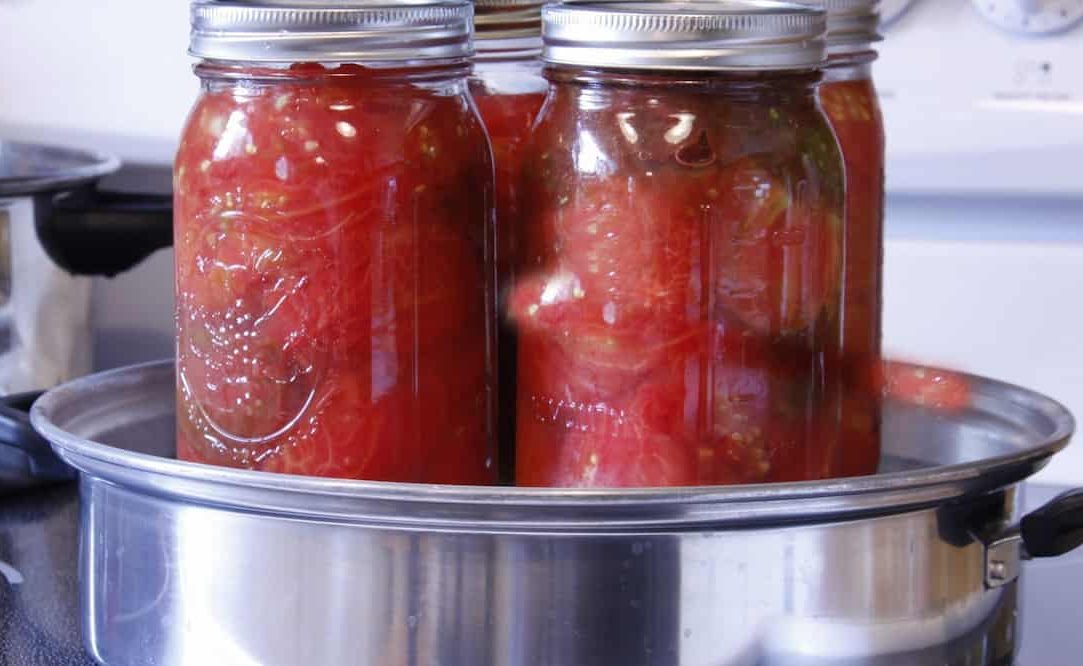
When this occurs, the food needs to be canned in a pressure canner as a low-acid product or acidified to a pH of 4.6 or lower with lemon juice or citric acid. Either option requires the product to be acidified to a certain degree.
According to research, there are a few different circumstances that can lessen the acidity of tomatoes. These include deterioration or damage brought on by bruising, cracks, blossom end rot brought on by insects, or overripening of the fruit.
Tomatoes that have been produced in the shade, matured in fewer hours of daylight, or ripened off the vine often have a lower acidity level compared to tomatoes that have been ripened in direct sunlight on the vine.
Additionally, tomatoes that are harvested while still attached to dead vines have a significantly lower acidity level in comparison to tomatoes that are harvested from healthy vines.
Home canning should not be done with rotten, damaged, or diseased tomatoes, as well as tomatoes picked from plants that have been killed by frost or are dead.
When processing whole, crushed, or juiced tomatoes in a boiling water bath, adding lemon juice or citric acid will guarantee that the tomatoes have an appropriate level of acidity.
For each quart of tomatoes, stir in either 2 tablespoons of bottled lemon juice or 1/2 teaspoon of citric acid.
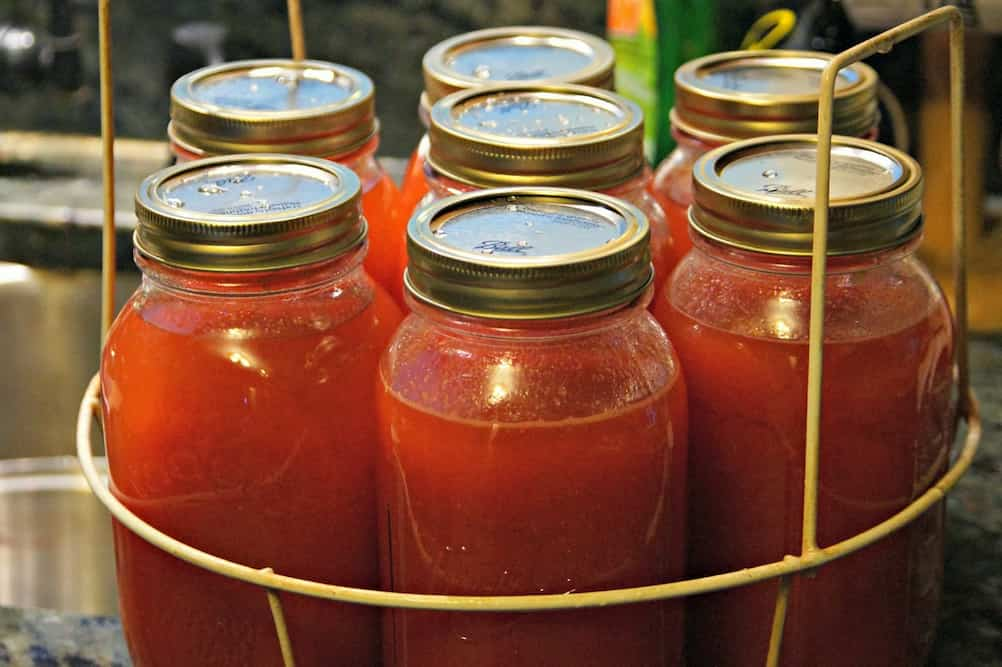
Use one tablespoon of bottled lemon juice or one-fourth of a teaspoon of citric acid for each pint. Before filling the jars with product, acid can be added straight to the jars themselves.
If you want to mask the flavor, add some sugar to it. Instead of using lemon juice or citric acid, you can substitute one quart of water with four tablespoons of vinegar that has an acidity level of five percent. However, vinegar has the potential to alter flavors in an unpleasant way.
Careful processing is required to prevent food from becoming bad.
Underprocessing and improper sealing are the two factors that contribute to home-canned tomato products going bad the most frequently.
Tomatoes that have not been treated for a length of time sufficient to eliminate heat-resistant molds and bacteria are more likely to rot when they are stored. Bacillus coagulans is a common bacteria that produces flat-sour spoilage.
It is particularly heat resistant and is one of the organisms that induce spoiling. In spite of the fact that the lid of the jar may still be sealed and the product may have a normal appearance, the tomatoes will have a sour scent because lactic acid was formed by the growth of B.
coagulans in the product. Under no circumstances should you utilize tomatoes or tomato juice that has an odd flavor.
Molds have the potential to grow on the surface of tomato products that have been incorrectly processed, which might eventually lower the acidity to the point where botulism-producing spores could grow and release a toxin that is fatal.
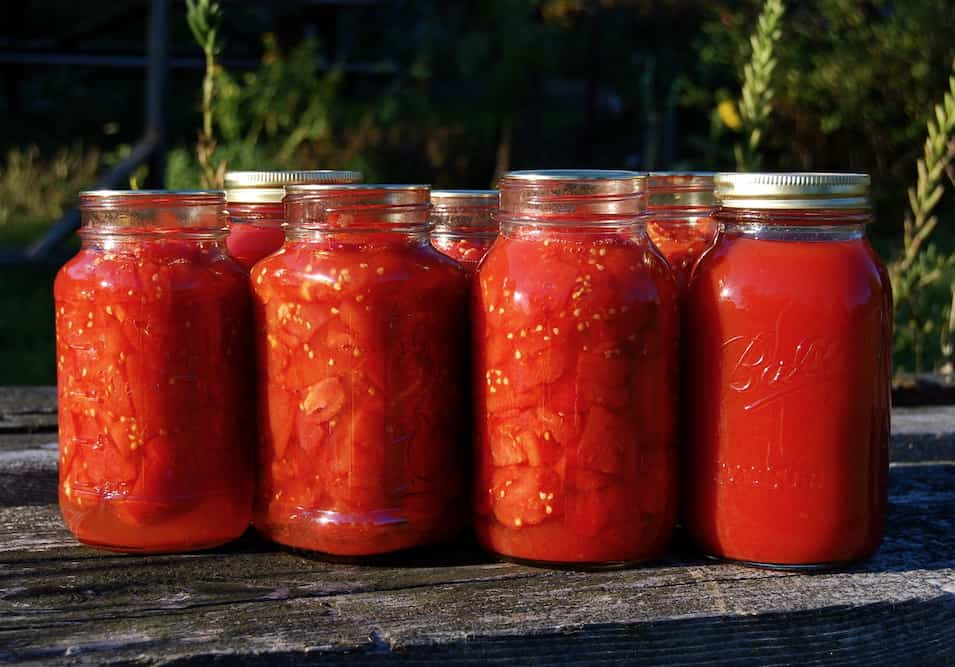
Any canned goods that display mold growth on the surface should be thrown away without being tasted since even trace levels of the botulinum toxin can cause a fatal sickness. Throw them away in a location where no other people or animals will be able to eat them.
The processing times that are mentioned in this fact sheet have been calculated to guarantee that molds and bacteria are adequately destroyed.
In the cases where it is applicable, processing advice for both water bath canning and pressure canning are provided. In general, the use of a pressure canner yields canned tomato products that are of superior quality and contain more nutrients.
Information Regarding Yields
A bushel of fresh tomatoes weighs 53 pounds and produces around 18 quarts of canned tomatoes or 15 to 18 quarts of juice. A bushel of tomatoes is equal to 18 quarts of juice. To make one quart of canned tomatoes, you will need approximately 2 1/2 to 3 1/2 pounds of fresh tomatoes.
Prepare Jars and Equipment
When canning at home, it is recommended that you use regular-sized mason jars. Be sure all jars and closures are excellent. Throw away any that are broken, chipped, dented, or have rust on them.
Seals that are intended to be airtight cannot be made because of defects. Before using, make sure the jars have been washed in hot, soapy water and thoroughly rinsed. Prepare metal lids as manufacturer advises.
Pressure canner. Make certain that your pressure canner has a cover that fits securely, a clean exhaust vent (or petcock), and a safety valve, as well as a pressure gauge that is accurate.
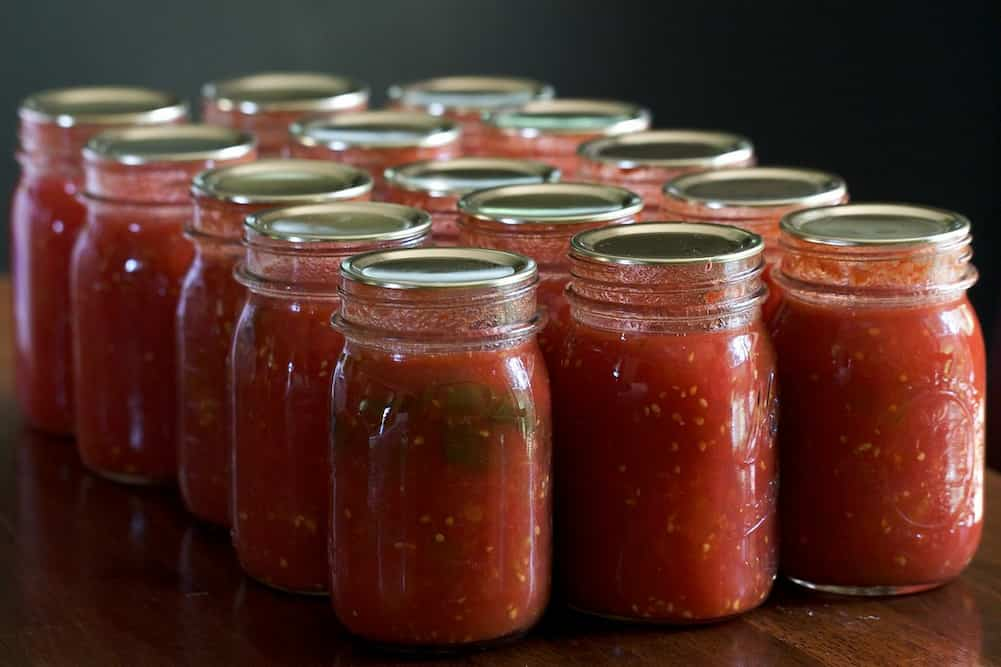
The dial gauge and the weighted gauge are the two primary varieties of pressure gauges. Before being put to use, weighted gauges need to have nothing more than their surfaces cleaned. The accuracy of dial gauges needs to be checked often.
Before using them during each season, as well as more frequently if they are used frequently. Inquire at the county office of the Colorado State University Extension to find out where you may get your gauge checked.
Make sure to use a canner that has a capacity of at least four quart jars. Smaller pressure canners-saucepans should not be used for home canning because they heat up and cool down too quickly to enable adequate heat penetration using the processing schedules given in this information sheet. Instead, larger pressure canners-saucepans should be used for home canning.
Canning pot with a water bath. Canning in a boiling water bath can be done in virtually any large metal container as long as it is sufficiently deep, has a cover that can be sealed tightly, and a rack made of wire or wood.
Jars are unable to come into contact with one another or tumble against the side of the canner thanks to the rack dividers.
It is essential that the container be at least 4 to 5 inches deeper than the height of the jars that will be used in order to provide sufficient space for the rack and water that is rapidly boiling.
A container that is at least 10 inches deep is required for canning in pint jars. The container must have a depth of at least 12 inches in order to accommodate quart jars.
It is possible to utilize a canner with a deep pressure as a boiling water bath. Cover the container, but do not secure the lid.
Additionally, ensure that the petcock is fully opened so that steam can escape and there is no buildup of pressure inside the canner.
Prepare Tomatoes
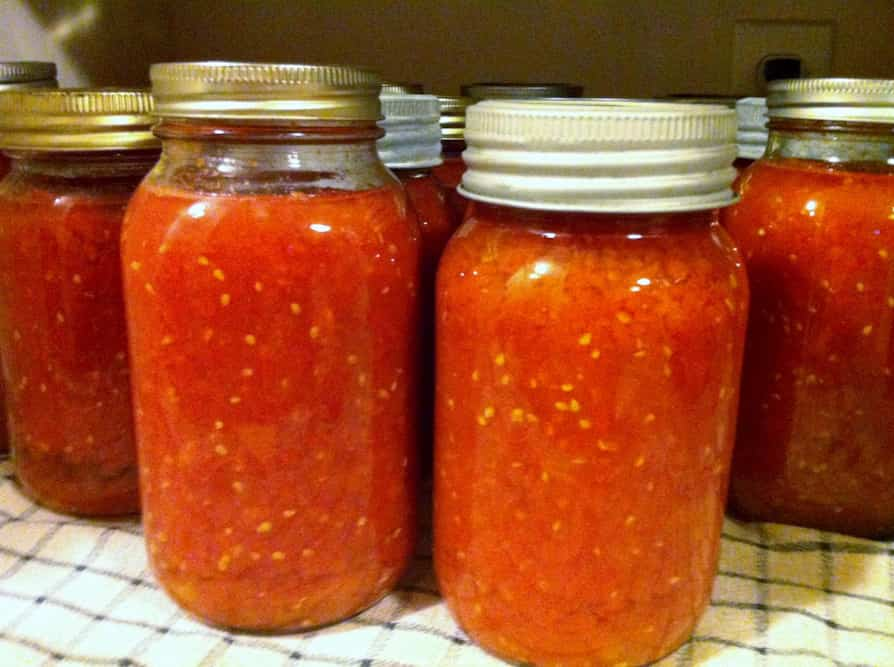
Pick tomatoes that are ripe, fresh, and firm. Tomatoes that are mushy, overripe, moldy, or decaying should not be canned, nor should tomatoes that have been taken from dead or frost-killed vines.
Green tomatoes have a higher acid content than mature tomatoes, but they are still able to be properly canned by following any of the following guidelines.
Thoroughly wash and drain the tomatoes. Soak in water that is boiling for thirty to sixty seconds, or until the skins crack.
Next, submerge yourself in ice water. Remove the stem as well as the entire white core that lies beneath the stem by cutting it with a sharp knife. Remove the skin using a peel. Remove any pieces that are bruised or have changed color.

Your comment submitted.